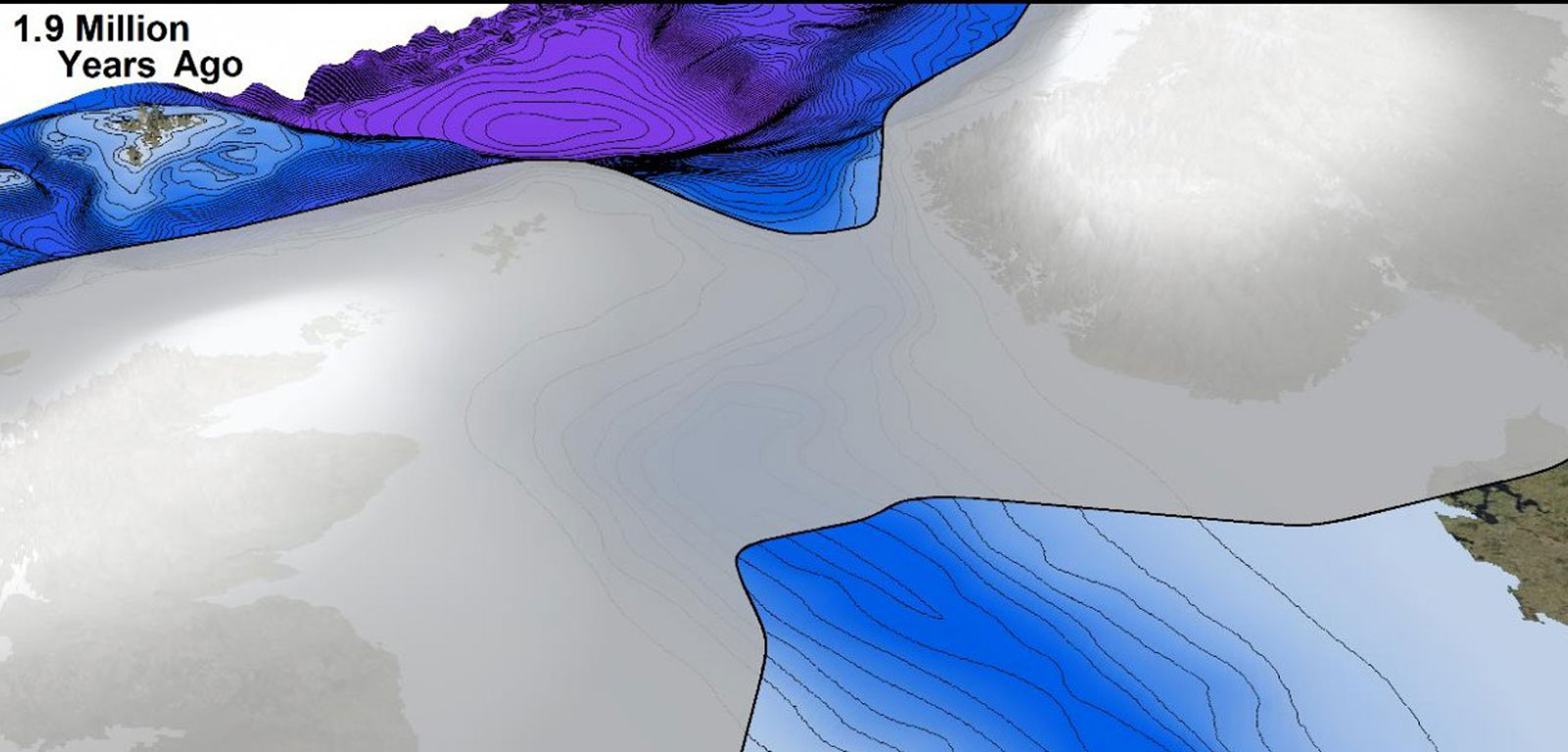New research reveals British Isles buried under ice sheets from 2.5 million years ago
Breakthrough research has revealed the British Isles were repeatedly submerged under an ice sheet extending to the centre of the North Sea over a million years earlier than previously thought.

A team led by scientists from the Universities of Aberdeen and Manchester and co-led by a researcher at Queen’s University Belfast, analysed sediment cores and seismic data from deep beneath the North Sea, and discovered that extensive ice sheets repeatedly covered much of the UK and Ireland from 2.5 million years ago.
At the same time, an even larger ice sheet covered much of Scandinavia. Back then the North Sea, was narrower and deeper than it is today, like a large ‘fjord’. Periodically, the ice sheets from the British Isles and Scandinavia advanced into water depths of around 250m and generated icebergs nearly 300m high.
By 1.9 million years ago the two ice sheets repeatedly merged in the centre of the North Sea, filling the ‘fjord’, as they advanced and retreated in response to climate changes controlled by the Earth’s orbit.
Up to now, the scientific consensus has been that glaciation on this scale first occurred in the North Sea about 1.1 million years ago.
However, the new research, which has been published in the journal Science Advances, shows it first happened 1.4 million years earlier. This marks a significant breakthrough in our understanding of the extent of past glaciation in North West Europe.
The study was carried out by geoscientists from the universities of Aberdeen, Manchester, Sheffield and Queen’s University Belfast, Apache North Sea Ltd., RPS Ichron, Mærsk Olie og Gas and Lloyds Register.
Dr Brice Rea, from the University of Aberdeen, led the project. He said: “Through our work with Apache North Sea we obtained sediment core samples from beneath the North Sea at a depth where they are rarely obtained, and combined this with a range of geophysical datasets that were being worked on at the University of Manchester.”
Dr Andrew Newton, a research fellow at Queen’s University Belfast and visiting researcher at the University of Manchester, co-led the project. He commented: “The geophysical data allowed us to explore ancient seafloor environments for traces left behind by long since disappeared ice sheets. These traces provide a unique insight into ice sheet history and show that ice sheets repeatedly advanced beyond the British coastline, leaving icebergs floating around the North Sea during multiple ice ages from about 2.5 million years ago.”
Dr Rea added: “Coalescence of the British ice sheet and ice from Scandinavia, which we show occurred at about 1.9 million years ago, wasn’t thought to have happened until about 780,000 years ago. Our findings completely change our understanding of how far back in time large ice sheets covered the British Isles and merged with ice from Scandinavia.”
Media
Media inquiries to Emma Gallagher at Queen’s University Communications Office T; +44 (0)28 9097 5384 E: emma.gallagher@qub.ac.uk